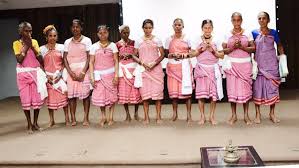Relevance: Prelims/Mains: G.S paper I: Society: Art & culture
Why in news?
- Renowned fashion designer Wendell Rodricks (59) died at his residence in Colvale village in Goa.
Wendell Rodricks:
- A Padma Shri awardee, Rodricks was also an author, environmentalist and gay rights activist.
- He was in the process of setting up a museum, Moda Goa Museum and Research Centre, which Rodricks had dedicated to clothes and fashion in Goa through the ages.
- As a designer he has been credited with reviving the Kunbi saree, worm by the indigenous Kunbi tribal women of Goa.
About
Our country is known to be one of the most diverse places of the world, with its mesmerizing cultures and the unity among them all. These cultures have their own distinctive traits that also extend to having unique clothing. Even the smallest state of India, Goa, has a beautiful culture beyond the sun and sands.
A traditional dressing style of the Goans is the infamous Kunbi Saree. Associated with the Kunbi tribe of Goa, the saree is worn by the Kunbi and Gawda tribes, who are the original inhabitants of Goa.
The apparel is centuries old and existed even before the arrival of the Portuguese. During the colonial rule, the culture of the Kunbi tribes, including the wearing of these sarees disappeared since the Portuguese forced Goans to change their dressing style.
However, it was revived by the government and the tribe itself after the Portuguese left, from 1961 onwards.
The saree has a red base color, with a checkered pattern on it. It was also 100% cotton, hand woven by the tribe itself. Now, one knows how difficult it is for one to do chores in a saree. The Kunbi tribe was a farmer’s tribe, and cultivated paddy fields.
The saree was uniquely designed to enable the women to work freely in the fields, and was also comfortable enough to do household chores. The saree is shorter in length than a normal 5-6 yards saree. Hence, when one wears it, it doesn’t fully cover the legs.
The drape is flared from the waist onwards, adding to comfort. The weave is strong and sturdy, so it doesn’t wear away easily.
Earlier, it was also draped in such a way that a separate blouse wasn’t needed to cover the chest. A knot was simply tied on the right shoulder.
Another notable feature is that the checks on the saree are dyed in few colours, i.e. Yellow (Kesari), Red (Tambdo), White (Dhavo) and Green (Hirvo). Darker shades of Maroon, Purple and Black are also used.
It’s a standard pallet and no other colours apart from these are used in an authentic Kunbi saree. The colours are known to signify different stages of life, like youth, marriage, old age and death. The dyes for these colours were extracted naturally, since Goa and the surrounding areas was home to 156 different kinds of dye yielding plants.
Earlier, the dye was obtained from a recipe of iron ore, rice kanji (starch) and vinegar. All of which is abundantly found in Goa. Nowadays, the dyes are procured from Sawantwadi.
For regular UPSC related updates and Daily Current Affairs, join our Telegram Channel: https://t.me/triumphias



It is great blog post